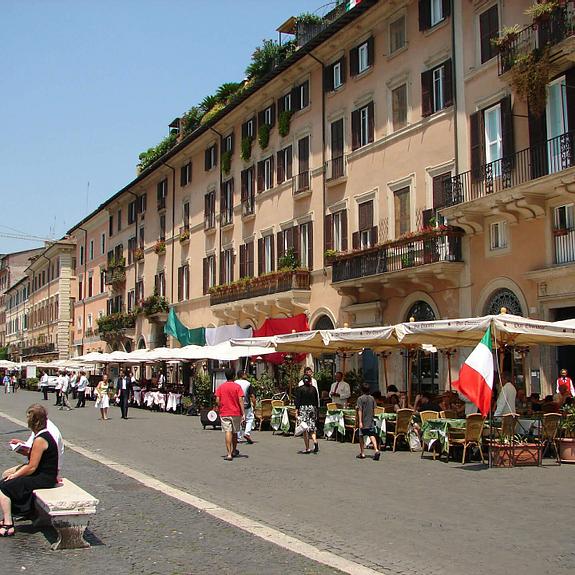History surrounds the Hotel Nazionale
At the end of 19th century the Nazionale opened in this building, which had been built in 1733 as part of an overall area project decided by Pope Clemente XII (1730 - 1740). The aim was to have a building functionally linked to the one of the Apostolic Curia (now the Montecitorio complex, home of the Italian Parliament ).
The Apostolic Curia Palace was built during the work on the Piazza ordered by Pope Clemente XII. The design of the piazza, as we can see it today, dates back to the end of the 17th century and Pope Innocent XII (1691 – 1700 ) and many old buildings were demolished to take way for it . As a result the owners of the lots, among which the Capranica's owners (the Hotel is on the land that then belonged to Monsignor Capranica), were afterwards authorized to reconstruct their own palaces, according to the new road perimeter.
The Hotel Nazionale is part of the Colonna 'quartiere', an historical central district where all the most important institutions where located after Rome became the capital of unified Italy (1870).
This urban district holds two of Rome's most significant historical monuments: Marc'Aurelius' column (hence the name 'Colonna 'quartiere') and the Egyptian obelisk brought to Rome by Emperor Augustus and now facing Hotel Nazionale.
The column, also called the "Colonna Antonina", is on Piazza Colonna and the 16th century inscriptions at its basement tell us that it was erected between 176 and 192 by Commodus,son of Emperor Marcus Aurelius, to celebrate his father's victories in ancient Germany. In 1589 Pope Sixtus V ordered the restoration of the column; Domenico Fontana was responsible for the resotration.




